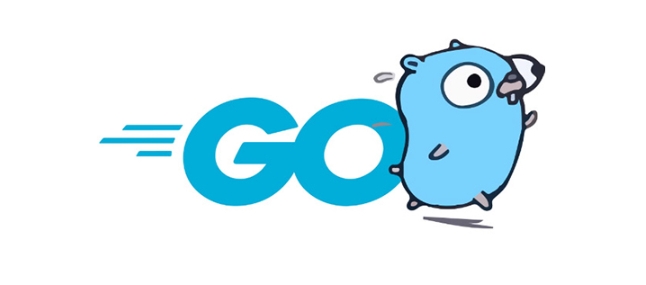How to implement a set data structure efficiently in Go?
Jul 25, 2025 am 03:58 AMGo does not have a built-in collection type, but it can be implemented efficiently through maps. Use map[T]struct{} to store element keys, empty structures have zero memory overhead, and the implementation of addition, inspection, deletion and other operations are O(1) time complexity; in a concurrent environment, sync.RWMutex or sync.Map can be combined to ensure thread safety; in terms of performance, memory usage, hashing cost and disorder; it is recommended to encapsulate Add, Remove, Contains, Size and other methods to simulate standard collection behavior.

In Go, there's no built-in set data structure like in Python or JavaScript, but implementing one efficiently is straightforward using a map. The key idea is to use the keys of a map to represent the set elements, and ignore the values (or use them as placeholders).

Here's how you can do it effectively.
Use a Map with Empty Struct Values
The most common and memory-efficient way to implement a set in Go is by using a map[T]struct{} where T is the type of your elements.

Why struct{} ? Because it takes up zero memory when stored as a value in a map, which makes this approach more efficient than using bool or other types.
set := make(map[int]struct{})To add an element:

set[5] = struct{}{}To check if an element exists:
if _, exists := set[5]; exists {
// do something
}This method keeps memory usage low and operations fast — all basic set operations (insert, delete, lookup) are O(1) time complexity.
Handle Thread Safety for Concurrent Use
If you're working in a concurrent environment (eg, multiple goroutines accessing the set), standard maps aren't safe for concurrent reads and writes.
You have two main options:
- Wrap your map with a
sync.RWMutexto control access. - Use
sync.Mapif your workload involves mostly insertions and looksups with few deletions, though it may not always be the best fit.
Using a mutex-based wrapper looks like this:
type Set struct {
m map[int]struct{}
mu sync.RWMutex
}
func (s *Set) Add(val int) {
s.mu.Lock()
defer s.mu.Unlock()
sm[val] = struct{}{}
}
func (s *Set) Contains(val int) bool {
s.mu.RLock()
defer s.mu.RUnlock()
_, exists := sm[val]
Return exists
}For single-threaded use or read-heavy workloads, stick with a plain map — it's faster and simpler.
Consider Performance Trade-offs
While the map-based approach is simple and fast, there are a few performance-related considerations:
- Memory overhead : Maps store both keys and values, so even though
struct{}adds nothing, the key itself still contributes to memory usage. - Hashing cost : Every operation requires hashing the key, so if you're storing large structs as keys (not common), consider wrapping them in a pointer or flattening them.
- Iteration order : Sets implemented via maps don't maintain any order. If you need ordered traversal, you'll have to collect the keys into a slice and sort them manually.
If you're dealing with integers and performance is critical, some people use bitset implementations for dense integer ranges. But those are less flexible and not suitable for sparse or non-integer sets.
Bonus: Basic Operations You'll Want to Implement
Here are a few helper functions you might want to write for your set:
- Add : Insert a new item
- Remove : Delete an existing item
- Contains : Check exists
- Size : Return number of elements
- Clear : Reset the set
- Items : Get a slice of all items (optional)
func (s *Set) Remove(val int) {
s.mu.Lock()
defer s.mu.Unlock()
delete(sm, val)
}
func (s *Set) Size() int {
return len(sm)
}These extensions help mimic typical set behavior found in other languages.
That's basically it — Go doesn't have a native set, but using a map gives you a clean and perform alternative. It's simple enough for most use cases and easy to customize when needed.
The above is the detailed content of How to implement a set data structure efficiently in Go?. For more information, please follow other related articles on the PHP Chinese website!

Hot AI Tools

Undress AI Tool
Undress images for free

Undresser.AI Undress
AI-powered app for creating realistic nude photos

AI Clothes Remover
Online AI tool for removing clothes from photos.

Clothoff.io
AI clothes remover

Video Face Swap
Swap faces in any video effortlessly with our completely free AI face swap tool!

Hot Article

Hot Tools

Notepad++7.3.1
Easy-to-use and free code editor

SublimeText3 Chinese version
Chinese version, very easy to use

Zend Studio 13.0.1
Powerful PHP integrated development environment

Dreamweaver CS6
Visual web development tools

SublimeText3 Mac version
God-level code editing software (SublimeText3)

Hot Topics
 Developing Kubernetes Operators in Go
Jul 25, 2025 am 02:38 AM
Developing Kubernetes Operators in Go
Jul 25, 2025 am 02:38 AM
The most efficient way to write a KubernetesOperator is to use Go to combine Kubebuilder and controller-runtime. 1. Understand the Operator pattern: define custom resources through CRD, write a controller to listen for resource changes and perform reconciliation loops to maintain the expected state. 2. Use Kubebuilder to initialize the project and create APIs to automatically generate CRDs, controllers and configuration files. 3. Define the Spec and Status structure of CRD in api/v1/myapp_types.go, and run makemanifests to generate CRDYAML. 4. Reconcil in the controller
 How to implement a set data structure efficiently in Go?
Jul 25, 2025 am 03:58 AM
How to implement a set data structure efficiently in Go?
Jul 25, 2025 am 03:58 AM
Go does not have a built-in collection type, but it can be implemented efficiently through maps. Use map[T]struct{} to store element keys, empty structures have zero memory overhead, and the implementation of addition, inspection, deletion and other operations are O(1) time complexity; in a concurrent environment, sync.RWMutex or sync.Map can be combined to ensure thread safety; in terms of performance, memory usage, hashing cost and disorder; it is recommended to encapsulate Add, Remove, Contains, Size and other methods to simulate standard collection behavior.
 Building High-Performance Microservices with Go
Jul 25, 2025 am 04:32 AM
Building High-Performance Microservices with Go
Jul 25, 2025 am 04:32 AM
UselightweightrouterslikeChiforefficientHTTPhandlingwithbuilt-inmiddlewareandcontextsupport.2.Leveragegoroutinesandchannelsforconcurrency,alwaysmanagingthemwithcontext.Contexttopreventleaks.3.OptimizeservicecommunicationbyusinggRPCwithProtocolBuffers
 Building and Deploying Go Applications with Docker
Jul 25, 2025 am 04:33 AM
Building and Deploying Go Applications with Docker
Jul 25, 2025 am 04:33 AM
Usemulti-stageDockerbuildstocreatesmall,secureimagesbycompilingtheGobinaryinabuilderstageandcopyingittoaminimalruntimeimagelikeAlpineLinux,reducingsizeandattacksurface.2.Optimizebuildperformancebycopyinggo.modandgo.sumfirsttoleverageDockerlayercachin
 Integrating Go with Kafka for Streaming Data
Jul 26, 2025 am 08:17 AM
Integrating Go with Kafka for Streaming Data
Jul 26, 2025 am 08:17 AM
Go and Kafka integration is an effective solution to build high-performance real-time data systems. The appropriate client library should be selected according to needs: 1. Priority is given to kafka-go to obtain simple Go-style APIs and good context support, suitable for rapid development; 2. Select Sarama when fine control or advanced functions are required; 3. When implementing producers, you need to configure the correct Broker address, theme and load balancing strategy, and manage timeouts and closings through context; 4. Consumers should use consumer groups to achieve scalability and fault tolerance, automatically submit offsets and use concurrent processing reasonably; 5. Use JSON, Avro or Protobuf for serialization, and it is recommended to combine SchemaRegistr
 A Guide to Go's Templating Engine
Jul 26, 2025 am 08:25 AM
A Guide to Go's Templating Engine
Jul 26, 2025 am 08:25 AM
Go's template engine provides powerful dynamic content generation capabilities through text/template and html/template packages, where html/template has automatic escape function to prevent XSS attacks, so it should be used first when generating HTML. 1. Use {{}} syntax to insert variables, conditional judgments and loops, such as {{.FieldName}} to access structure fields, {{if}} and {{range}} to implement logical control. 2. The template supports Go data structures such as struct, slice and map, and the dot in the range represents the current iterative element. 3. The named template can be defined through define and reused with the template directive. 4.ht
 How to pass a slice to a function in Go?
Jul 26, 2025 am 07:29 AM
How to pass a slice to a function in Go?
Jul 26, 2025 am 07:29 AM
When passing slices in Go, it is usually passed directly by value, because the slice header contains a pointer to the underlying array, and copying the slice header will not copy the underlying data, so the modification of elements in the function will affect the original slice; 1. If you need to reassign or adjust the slice length within the function and make the change take effect, you should pass the slice pointer; 2. Otherwise, you can pass the slice directly without using a pointer; 3. If reallocation may be triggered when using append, you must pass through the pointer to make the updated slice visible to the outside. Therefore, unless the entire slice is to be replaced, the slice should be passed in the form of a value.
 what does go vet do
Jul 26, 2025 am 08:52 AM
what does go vet do
Jul 26, 2025 am 08:52 AM
govetcatchescommonlogicalerrorsandsuspiciousconstructsinGocodesuchas1)misuseofprintf-stylefunctionswithincorrectarguments,2)unkeyedstructliteralsthatmayleadtoincorrectfieldassignments,3)sendingtoclosedchannelswhichcausespanics,4)ineffectiveassignment






